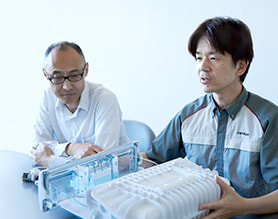Create New Value
Product Development Stories
Vacuum Compartment Performance Test
From spiny lobster to fresh yoghurt,
we found ways to preserve their freshness
and nutrition with over 6,000 tests.
Atsuko Funayama and Mako Kokubu – from the Products Division Refrigeration and
Heating Home Appliances Unit Design Department – are the inventive engineers of Hitachi's new Side By Side Refrigerator.
Creating a low oxygen environment in the conventional "Vacuum Compartment", to preserve nutrients and freshness.
The major premise is that the essential function of a refrigerator is to preserve food and ingredients. Our work, therefore, was to see how well we could preserve the food and ingredients by maintaining as much of the freshness and nutrition as possible.
The original concept behind "Vacuum Compartment" was that with the rising number of working women in Japan, the trend was for them to buy several day's worth of fresh food at once. For this reason, we wanted people around the world to fully enjoy their meals more by having the refrigerator do the work of preserving the freshness and nutrition of food. The "Vacuum Compartment" function was created from this concept.
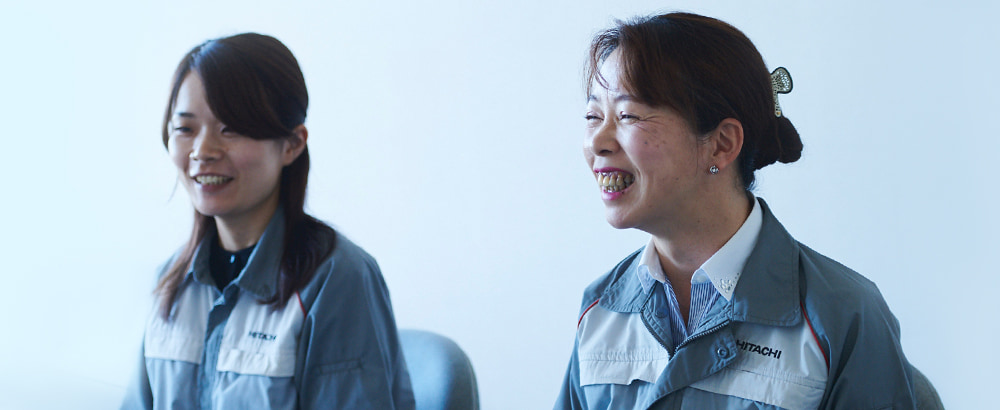
Regular chilling preserves freshness by keeping the temperature at around 0°C, but this will not preserve the nutrients that oxidise easily, such as vitamins and amino acids. Therefore, a chilled compartment with a sealed construction was conceived to maintain an air pressure of approx. 0.8 atm to create a low oxygen environment to preserve nutrients that are easily oxidised. This is what "Vacuum Compartment" is.
It was decided that a vacuum would have to be applied to a refrigerator without changing the conventional method for preserving meat and fish, which resulted in the current outcome.
Thorough verification of results using combinations of food and nutrients.
The freshness and nutrient tests were repeated more than 6,000 times before the "Vacuum Compartment" development was completed. Testing was performed on different types of food, such as six different varieties just for fish, including salmon, tuna, and sardines. Tests were also conducted on meat, vegetables, fruits, and other foods. Since eating raw seafood is part of the Japanese food culture, tests were also conducted with live spiny lobsters and Japanese littleneck clams. These were confirmed to be still alive even after being preserved for three days in "Vacuum Compartment". It is very frustrating in particular for people when premium shrimp spoil right away, so it was wonderful to find out that this problem could be solved.
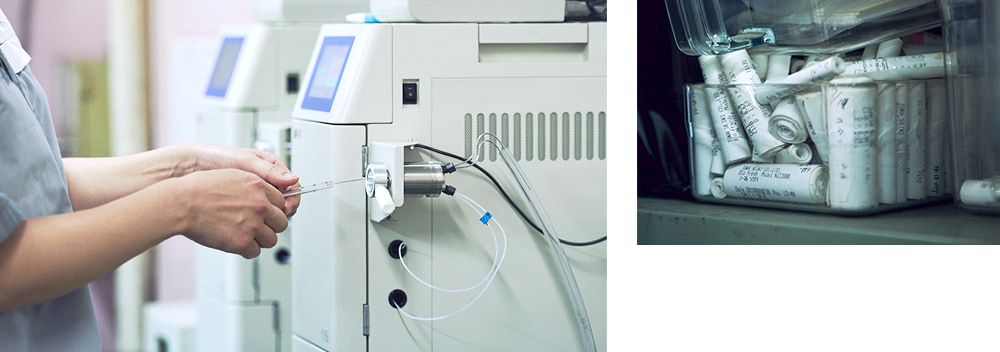
We then decided to see how cultured foods, such as yoghurt and natto (fermented soybeans) fared, so we conducted many tests to see if the lactic acid bacteria survived.
We also studied nutrients and selected those that are degraded by oxygen, such as Vitamins A, B, C and D, and amino acids, for each type of food. We continued to search for those that are good for the health of people, and whether or not they are degraded by oxygen.
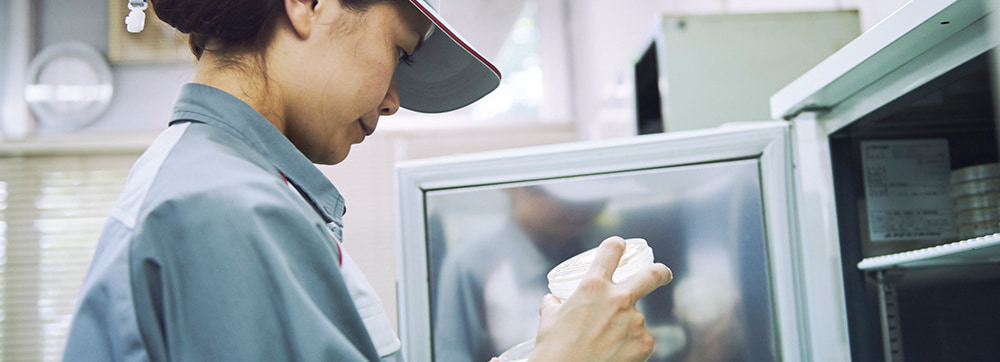
Happy comments received from users.
For example, a fisherman told us that there is a delicious type of shrimp that quickly turns black, so it cannot be sold in the market, and cannot be preserved for a day – even when refrigerated. So what cannot be eaten the day it is caught, goes to waste. However, when he tried keeping the shrimp in the "Vacuum Compartment", the freshness and colour were preserved even after a day and they were still delicious.
Other comments included: "Even for regular meals, the freshness and colour of meat usually deteriorates after a day, so it was amazing to discover how well the freshness was preserved – even retaining its bright, fresh colour". Another was: "When the salad I made the previous day was put into the refrigerator without being wrapped, it did not even wilt – which was a big help". We have received many happy comments like this, which makes it worth all the hard work we put in.
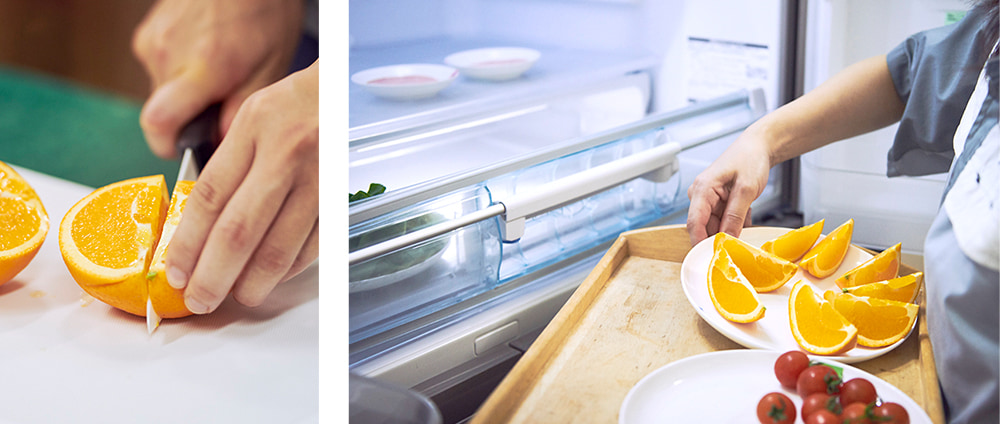
Developing further freshness preservation technology from Vacuum Compartment.
Based on the progress made so far, we continue to evolve daily in our pursuit of freshness. We are conducting a range of research including releasing Vitamin C inside the "Vacuum Compartment" and adjusting carbon dioxide concentration inside the container to preserve freshness. Progressively, we are applying this to the vegetable compartment in an effort to maintain freshness throughout the entire refrigerator. Our repeated testing of the vegetable compartment includes vegetables such as coriander and water spinach in addition to Japanese ingredients.

This is the first attempt by Side By Side to include "Vacuum Compartment" in refrigerators manufactured overseas. We believe that thinking about what would make people all over the world happy, and proposing even one thing they will want to use, brings us closer to them. We are looking forward to discovering new uses for this technology overseas that we have not imagined and using those discoveries to produce even better products.
*Vacuum means the space where the pressure is lower than the atmospheric pressure. The pressure in the Vacuum Compartment is approx. 0.8 atm, which is lower than the atmosphere pressure, so Hitachi calls this a vacuum.


